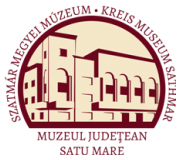Marcu-Istrate, Daniela - Rusu, Adrian Andrei - Szőcs Péter Levente (szerk.): Arhitectura religioasă medievală din Transilvania 3. (Satu Mare, 2004)
Adrian Andrei Rusu: Capele şi cetăţi în Transilvania şi vecinătăţile ei în secolele XIII-XIV
Adrian Andrei RUSU Lista ilustraţiilor - List of illustration Fig. 1. Donjonul de la Bologa, releveu din perioada interbelică - The donjon of Bologa (Sebesvár) — drawing, made between the two world-war; Fig. 2. Cetatea de la Feldioara, după D. Căpăţână, cu evidenţierea fazelor vechi; - The castle of Feldioara (Földvár, Marienburg), after D. Căpăfănă, with the building phases; Fig. 3. Cetatea de la Turnu Severin, după Al. Bărcăcilă; - The castle ofTurnu Severin (Szörényvár), after Al. Bărcăcilă; Fig. 4. Cetatea de la Orăştie, cu turnul donjon şi rotonda primei faze, după H. Fabini, cu marcarea celor mai vechi componente de piatră; - The castle of Orăştie (Szászváros, Broos), with the donjon-tower and the rotunda of the first phase, after H. Fabini, indicating the first stone-phase; Fig. 5. Cetatea de la Viscri, în prima fază de funcţionare, după Mariana Dumitrache, cu marcarea primei faze; — The castle of Viscri (Szászfehéregyháza, Deutsch- Weisskirch), after Mariana Dumitrache, indicating the first phase; Fig. 6. Cele mai vechi componente ale ansamblului de la Slimnic, după Monica Neacşu, cu marcarea fazelor vechi; — The oldest elements of the Slimnic (Szelindek, Stolzenburg) building complex, after Monica Neacşu, indicating the first building phases; Fig. 7. Planimetria fortificaţiei de la Braşov-Şprenghi, după A. Prox şi Alexandrina D. Alexandrescu - N. Constantinescu; — The ground-plan of the castle of Braşov- Şprenghi (Brassó, Kronstadt), after A. Prox and Alexandrina D. Alexandrescu — N. Constantinescu; Chapels and Castles of Transylvania and its Neighborhood in the I3lh - I4lh Centuries (Abstract) The Transylvanian chapels located in the castles (and the cases in its neighborhood: the western part of Romania with the Banat, and Maramureş), are neglected by the scholars, in spite of the fact, that this problem is a well-known issue in the European scholarship. The main reason of this situation is the low number of written sources and the bad state of preservation of the monuments. Lot of information is transmitted by recent sources only - i.e. ‘urbaria’ from the 16'h, I7'h, and 18'h centuries — and by the romantic historiography. The scarcity of the sources is the result of the political context, but the role of the ecclesiastical revolution - the protestant reform — is even more significant in this aspect. The author presume - as a starting point for the analysis - that in the castles of the bishops (the castle of Oradea / Nagyvárad, Finiş / Várasfenes of the bishops of Oradea, the castle of Alba lulia / Gyulafehérvár, Floreşti / Szászfenes, Tăuţi / Szentmihály-kő of the bishops of Transylvania, and the castle of the bishop of Cenad / Csanád) must have existed chapels. The situation is similar in the case of the castles, built by the Teutonic Order in the region of Bársa / Burzenland / Barcaság (only the castle of Feldioara / Földvár / Marienburg, can be linked with more or less certainty to the order). In addition, at the royal castles — and at the castles used by the local officers: ‘voivoda ’ and the ‘vice-voivoda ’ of Transylvania, the ‘comes ’ of Timiş / Temes and the ‘ban ’ of Severin / Szörény — the existence of a chapel is assumed again. 120
